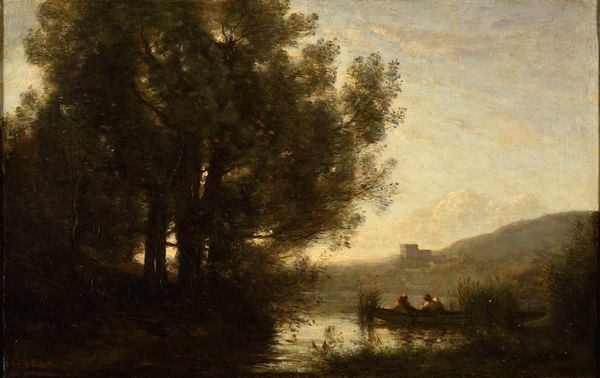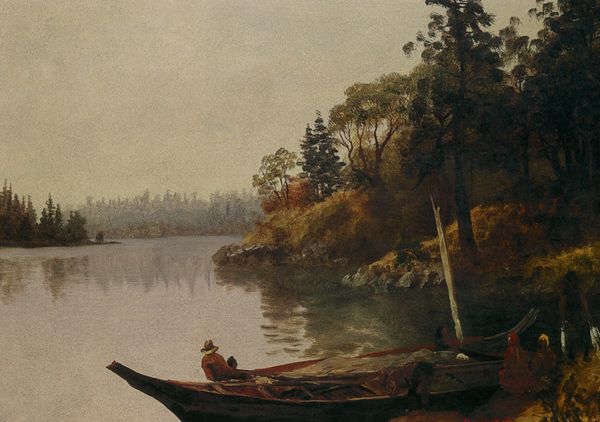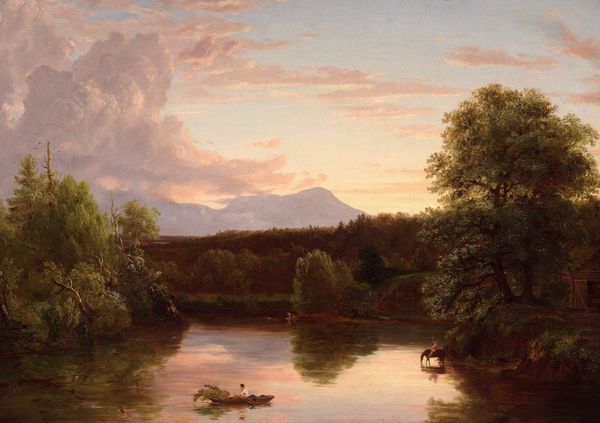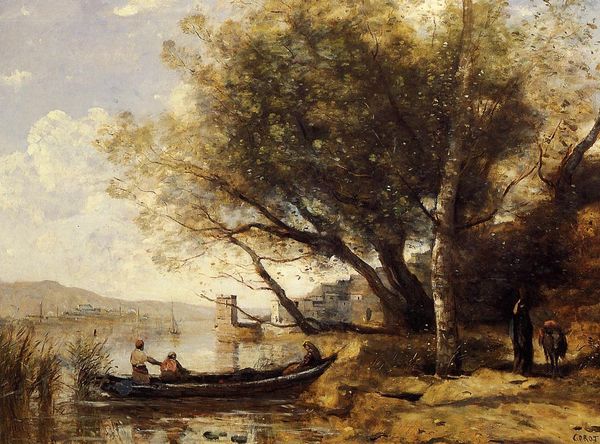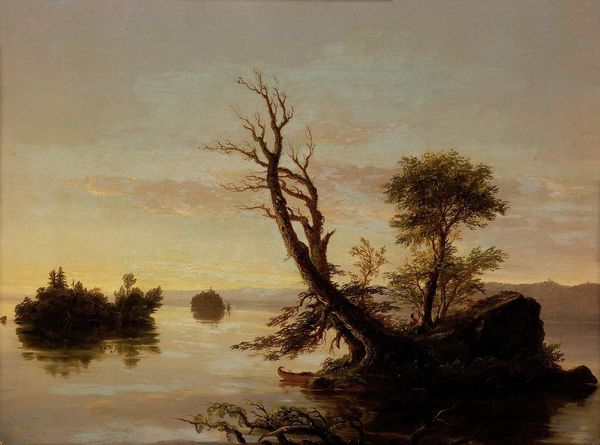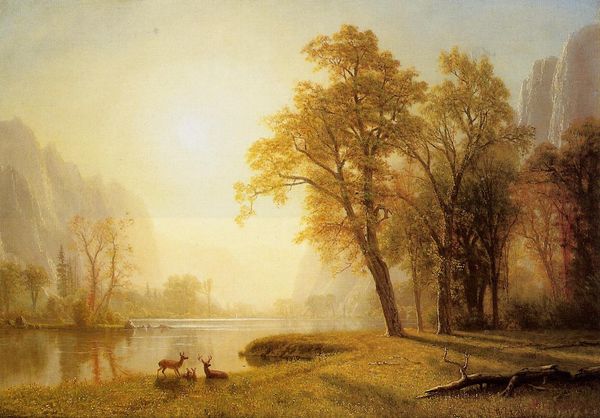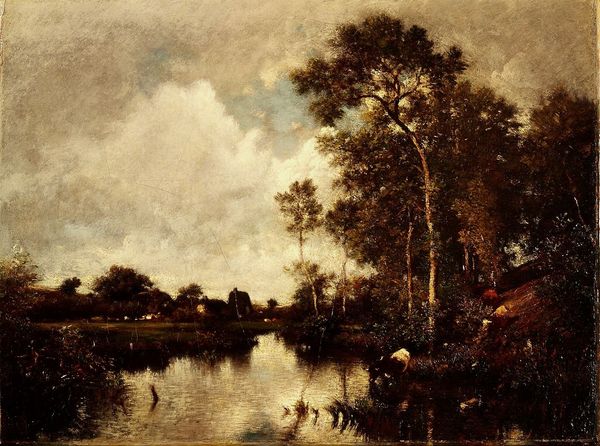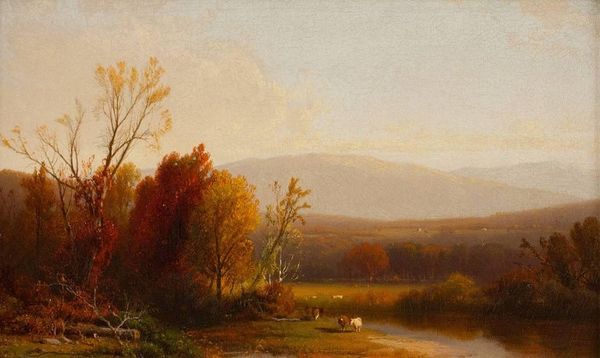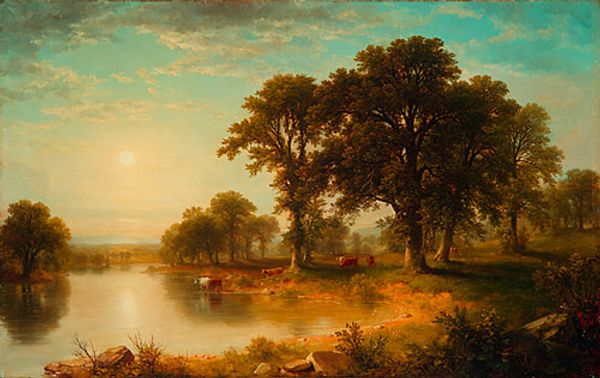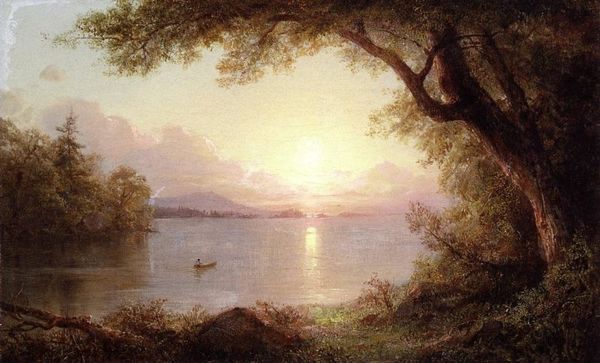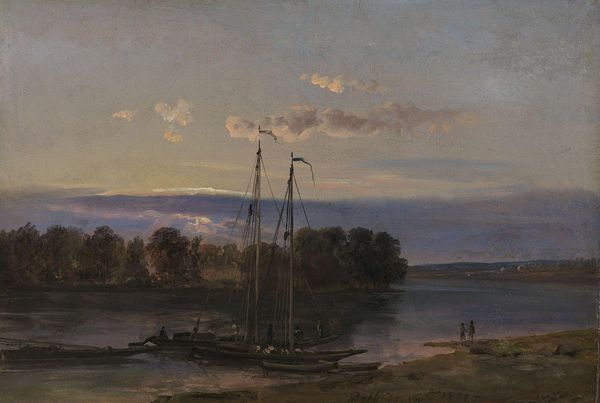
plein-air, oil-paint
#
tree
#
boat
#
sky
#
plein-air
#
oil-paint
#
landscape
#
river
#
forest
#
romanticism
#
mountain
#
water
#
history-painting
Copyright: Public domain
Editor: Here we have Albert Bierstadt’s "Salmon Fishing on the Cascapediac River," created with oil paints en plein-air. The muted colors give it this sort of hazy, dreamlike quality. I'm curious, what stands out to you about this piece? Curator: Well, I'm immediately drawn to the raw materials. Bierstadt's choice of oil paint is significant. Think about the process: pigment ground with oil, sourced, manufactured, transported. The very materiality speaks volumes about the industrialized art world even then, especially compared to something like fresco or earlier tempera. Editor: I see what you mean. So, the landscape isn't just a pretty picture, but also a product of industry? Curator: Precisely. And notice how the painting romanticizes the river, obscuring the intensive labor and capital required for leisure activities like salmon fishing. It idealizes a specific class's experience in nature, supported by a whole network of material extraction and production of canvases and paints that is completely invisible in the image itself. Editor: That’s fascinating. I never really considered the labor that went into the painting materials themselves. Curator: Consider also the societal implications. Who had access to these materials and leisure activities, and who was excluded? The painting operates as a record and celebration of privileged access. Editor: So, by looking at the materials, we can understand the painting as a cultural artifact, reflecting specific social and economic structures. Curator: Exactly! It highlights the means of production of not just the painting, but the very activity depicted within it. By thinking through the relationship of material and social production we arrive at deeper understandings. Editor: That really changes how I see this landscape. I am grateful for your comments. Curator: Absolutely, thinking materially opens up many new questions about art history.
Comments
No comments
Be the first to comment and join the conversation on the ultimate creative platform.
